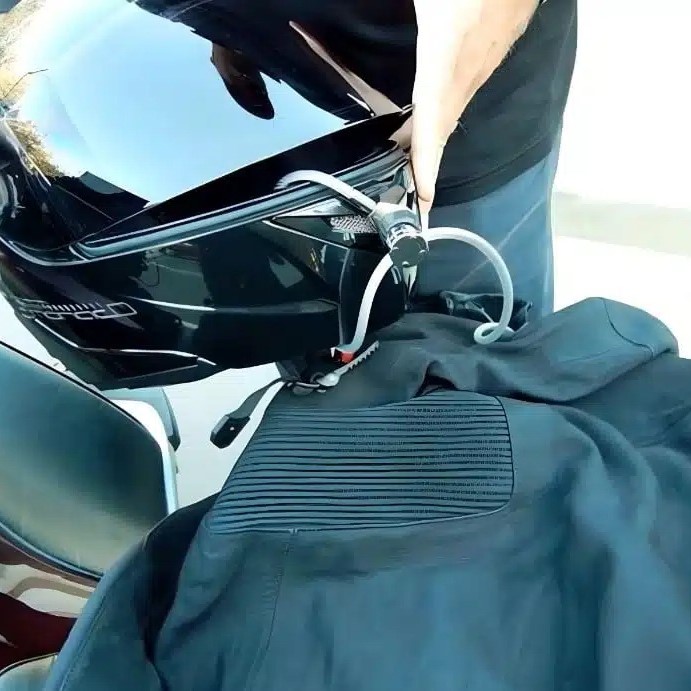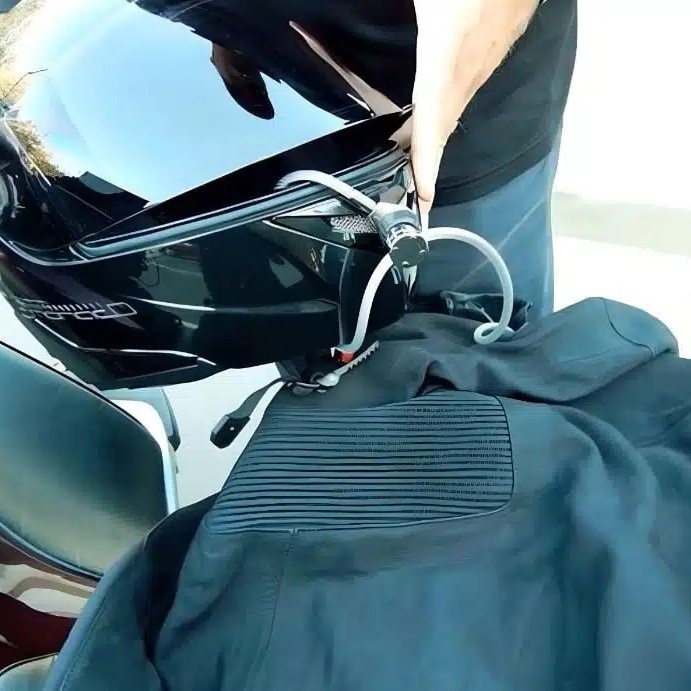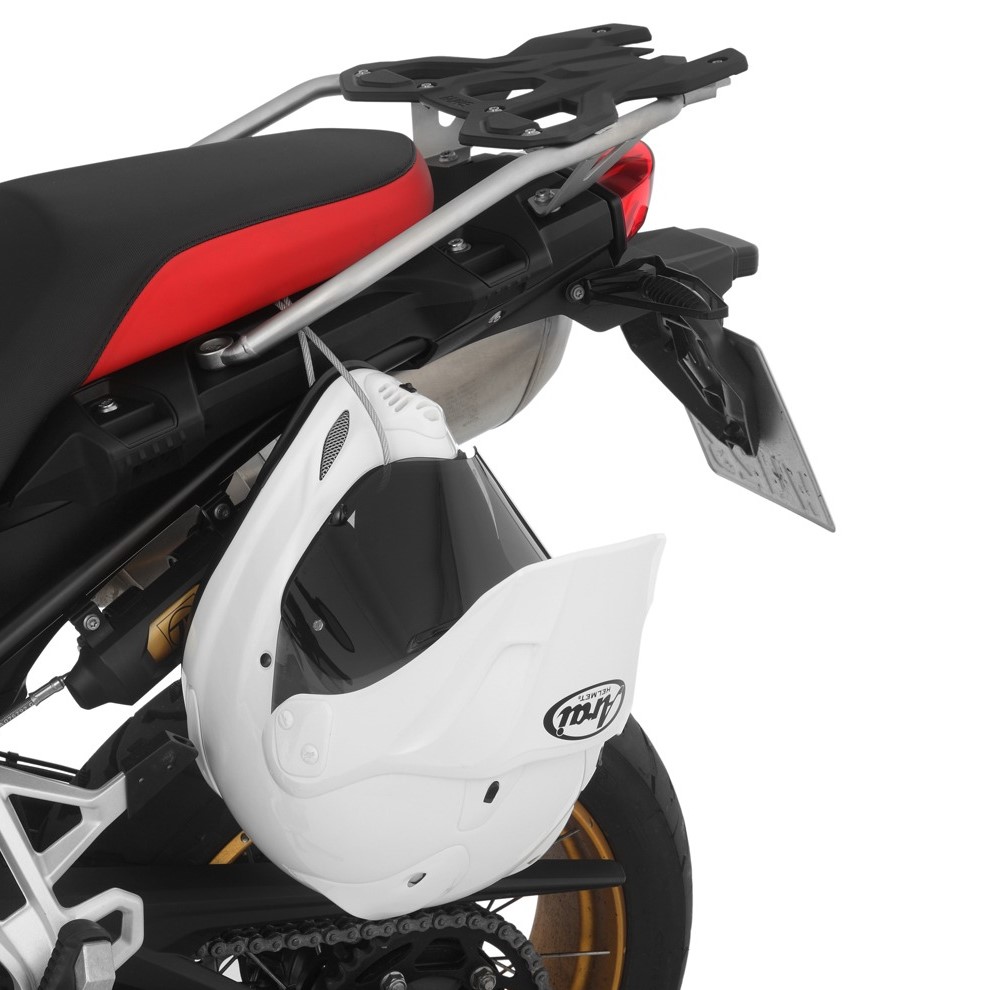Mar 26, 2025
Essential Tips on How to Lock Helmet on Motorcycle
The Importance of Helmet Security
How to lock helmet on motorcycle? Securing your helmet to your motorcycle is crucial for several reasons. First, safety is paramount – not just in terms of riding, but also in ensuring that your protective gear is with you at all times. If your helmet gets stolen because it wasn’t locked properly, you’re not just losing a valuable piece of equipment; you’re potentially compromising your safety on the road. It’s essential to have your helmet accessible whenever you need it.
Financial concerns also play a part. Helmets are not cheap, and the investment in a high-quality helmet should be protected. A stolen helmet can be an unexpected hit to your wallet, one that could have been avoided with proper security measures. Additionally, having to replace a helmet is not just costly, but it’s also inconvenient.
Moreover, legal requirements must be considered. In many regions, riders are legally obliged to wear a helmet, and failure to secure your helmet could result in legal complications if it delays or prevents you from complying with the law. Locking your helmet ensures that it’s always ready for use, helping you comply with regulations and avoid potential fines.
In essence, learning how to lock a helmet on a motorcycle ensures that your gear is protected at all times. It shields you from financial loss, legal issues, and the anxiety that comes with theft. We’ll delve into the various methods to secure your helmet in the following sections. Stay tuned as we cover each method in detail, helping you choose the right one for your needs.
Various Methods to Lock a Helmet to Your Motorcycle

Motorcyclists have several options for securing their helmets to their bikes. Each method offers a different level of security and convenience. Here’s a look at some common techniques to consider:
Using a Helmet Lock: This is a device designed to attach your helmet securely to your motorcycle. Most bikes come with a built-in helmet lock, often located near the rear seat or under the main body. Check your motorcycle’s manual to locate it.
Installing an Aftermarket Helmet Lock: If your bike doesn’t have a pre-installed lock, you can buy an aftermarket option. These locks can attach to your handlebars, frame, or saddlebags. They usually require a combination or key to unlock.
Using the D-Ring or Chin Strap: You can loop a cable lock through the helmet’s D-ring or chin strap and then secure it to your bike. This method may not be as secure as a dedicated helmet lock, but it’s a quick, easy solution.
Helmet Bags with Locks: Some riders opt for helmet bags that have integrated locks. You place your helmet inside the bag, which locks either to the motorcycle or has a built-in locking mechanism.
Lockable Top Cases: A lockable top case, or a motorcycle trunk, offers a secure and weatherproof place to store your helmet. Plus, it provides extra space for other items.
When choosing how to lock your helmet on your motorcycle, consider the security level each method provides and how it balances with your need for convenience. In the upcoming sections, we will explore how to select the best helmet lock for your motorcycle, and provide you with a step-by-step guide to locking your helmet securely.
Choosing the Right Helmet Lock for Your Motorcycle
When it comes to how to lock a helmet on a motorcycle, choosing the right helmet lock is critical for your safety and convenience. The type of lock you select will depend on several factors including the level of security you require, your budget, and ease of use. Here are a few steps to help you make the best choice:
- Evaluate Security Needs: Consider where you’ll be parking your motorcycle. High-risk areas may need more secure locks.
- Check Compatibility: Ensure the lock fits your bike’s make and model. Different motorcycles may have specific requirements.
- Weigh Convenience: Pick a lock that is easy for you to use regularly. A complicated lock may discourage frequent use.
- Consider Portability: If you travel often, look for a lock that’s lightweight and easy to carry.
- Assess Durability: A good helmet lock should be made of robust materials to resist cutting or tampering.
- Think About Weather Resistance: If you’re in an area with harsh weather, choose a lock that won’t corrode or freeze.
- Read Reviews: Look at what other riders say about different helmet locks. User experiences can guide your choice.
- Set a Budget: Decide how much you’re willing to spend. More expensive doesn’t always mean better.
Remember, a helmet lock isn’t just a purchase; it’s an investment in your safety. By taking the time to select the right helmet lock for your motorcycle, you not only ensure that your helmet is secure but also gain peace of mind. In the next section, we’ll walk you through a step-by-step guide to locking your helmet properly.
Step-by-Step Guide to Locking Your Helmet

Locking your helmet to your motorcycle doesn’t have to be complicated. Follow these simple steps to ensure your helmet remains safe and secure when you’re not around:
- Choose Your Lock: Select a helmet lock based on the previous section’s criteria. Ensure it offers the right balance of security and ease of use.
- Position Your Motorcycle: Park in a well-lit and visible area if possible. It adds another layer of deterrent against theft.
- Close the Helmet’s Visor: Before locking, always close the visor to protect your helmet’s interior from dust and rain.
- Use the Built-In Lock: If your bike has an integrated helmet lock, follow your motorcycle’s manual to use it. Typically, this involves placing the helmet’s D-ring over the lock’s hook and securing it.
- Use an Aftermarket Lock: For bikes without a built-in option, attach your aftermarket lock to a part of your motorcycle that is not easily removable. Secure the helmet’s chin strap or D-ring to the lock.
- Consider a Cable Lock: For a temporary solution, use a cable lock. Thread through your helmet’s D-ring or chin strap and then around a stable, immovable part of your bike.
Following these steps will help you secure your helmet properly. It will minimize the risk of theft and give you peace of mind while you’re away from your bike. Remember, the right technique on how to lock a helmet on a motorcycle can make all the difference.
Helmet Lock Maintenance and Best Practices
To keep your helmet lock functioning well, regular maintenance is key. Follow these best practices:
- Clean Regularly: Wipe down your helmet lock with a soft cloth. Remove dirt and grime to prevent jams.
- Lubricate the Lock: Apply a lubricant to the locking mechanism occasionally. This keeps it working smoothly.
- Inspect for Damage: Look for signs of wear and tear. If you spot damage, replace the lock to ensure safety.
- Test the Lock: Check the lock before each use. Make sure it opens and secures easily.
- Keep the Key Safe: Store the key in a secure place. If it’s lost, have a spare key or seek a replacement.
- Use it Properly: Follow the manufacturer’s instructions on how to lock a helmet on a motorcycle. Incorrect use can lead to failure.
- Avoid Force: Never force the key into the lock. If it doesn’t fit easily, there might be an issue.
- Check the Weatherproofing: Exposure to the elements can wear your lock. Choose weather-resistant models if you live in harsh climates.
- Be Mindful of Salt and Sand: If you ride in coastal areas or during winter, clean your lock more often to avoid corrosion.
By observing these maintenance tips and best practices, you ensure that your helmet lock remains reliable. This protects your investment and keeps you compliant with helmet laws, avoiding unnecessary complications. Next, we’ll look at innovations in helmet locking systems that are shaping the future of motorcycle safety.
Innovations in Helmet Locking Systems
With advancements in technology, the way we secure our helmets to motorcycles is also evolving. Newly developed locking systems offer better protection against theft and greater ease of use. Here are some of the latest innovations:
- Smart Locks: Some helmet locks now come with Bluetooth connectivity, allowing riders to lock and unlock their helmets using a smartphone app.
- Biometric Locks: For enhanced security, there are helmet locks that require fingerprint identification to open, making them nearly impossible to pick.
- Alarm Integration: Certain locks feature built-in alarms that trigger a loud noise if someone tries to tamper with the lock, thereby discouraging theft attempts.
- GPS Tracking: Advanced helmet locks come with GPS trackers. In the unlucky event of a theft, you can locate your helmet quickly.
- Quick-Release Mechanisms: Some models offer quick-release features that enable riders to secure and remove their helmets swiftly while maintaining high-security standards.
Remember, the key to how to lock a helmet on a motorcycle securely also involves staying updated with new technology. Keeping an eye on these innovations can provide you with more options for better protecting your helmet and enhancing your overall motorcycle safety experience. By incorporating these advancements, riders can benefit from both added security and convenience.
Tips for Preventing Helmet Theft

Preventing helmet theft requires a combination of vigilance, proper locking techniques, and good habits. Here are some tips to help you keep your helmet safe:
- Always Lock Your Helmet: Never leave your helmet unattended on your motorcycle without securing it.
- Use a High-Quality Lock: Invest in a robust lock. It should resist cutting or tampering.
- Park Smart: Choose well-lit, busy areas for parking. Thieves prefer dark, isolated places.
- Attach Helmet to Immovable Parts: Lock your helmet to a part of the bike that cannot be easily removed.
- Lock the Visor: Always close and lock the visor. It prevents someone from easily taking your helmet.
- Cover Your Motorcycle: A bike cover disguises the presence of a helmet and adds another layer of deterrence.
- Be Consistent: Make locking your helmet a habit. Consistency is key in preventing theft.
- Monitor Your Bike: Keep an eye on your motorcycle when in public spaces. Quick checks can deter potential thieves.
- Use Smart Locks: Consider smart locks with alarms or GPS tracking for added security.
- Educate Fellow Riders: Share these tips. When more riders secure their helmets, the risk of theft decreases community-wide.
Remember, the goal is to make stealing your helmet as difficult as possible. By following these tips on how to lock a helmet on a motorcycle, you can enjoy your rides knowing your helmet is safe.
Legal Implications of Helmet Security
Failing to secure your helmet can have legal consequences. Here are the implications to consider:
- Mandatory Helmet Laws: Many regions require riders to wear helmets by law. A stolen helmet may prevent compliance, leading to fines.
- Insurance Claims: A stolen helmet might affect insurance claims. Some policies require due diligence in securing your gear.
- License Penalties: Not wearing a helmet because it was stolen may result in points against your license or other penalties.
- Legal Responsibility: If someone steals your helmet and gets injured using it, there could be legal ramifications for not securing it properly.
- Theft Reporting: You must report helmet theft to the authorities. This is required for insurance and may aid in recovery.
By understanding how to lock a helmet on a motorcycle and the laws around it, you can avoid legal issues and stay safe.
More Details